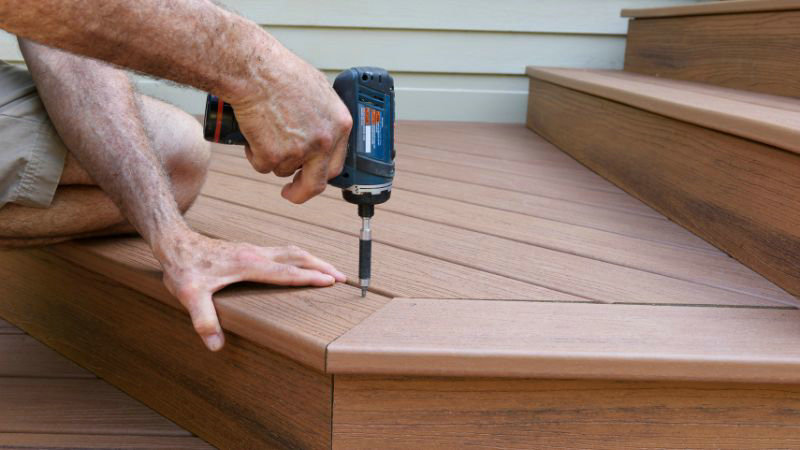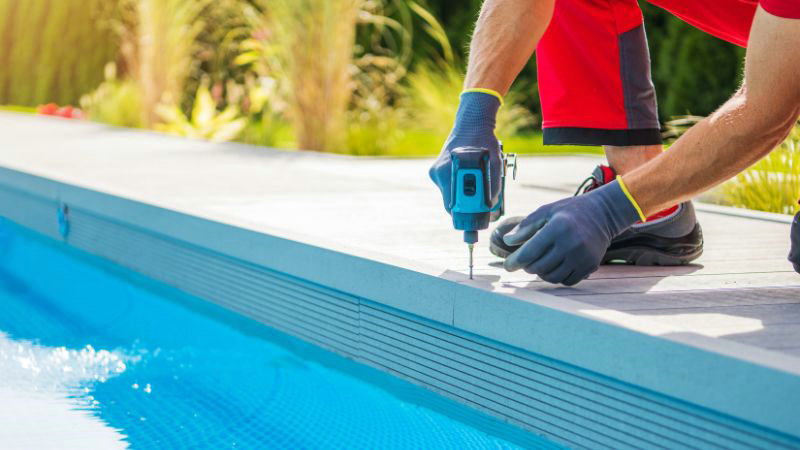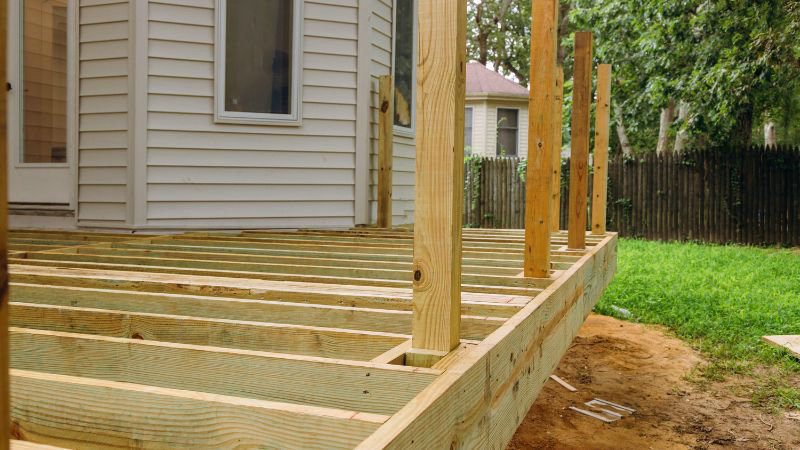
When building a deck, selecting the proper screw size is a crucial yet often overlooked aspect of the construction process. The right screws not only ensure the structural integrity of your deck but also contribute to its longevity and aesthetic appeal. With various factors to consider, such as board thickness, material type, and environmental conditions, choosing the correct screw size can seem daunting.
This comprehensive guide will walk you through the key considerations for selecting the ideal screws for your deck boards, helping you create a sturdy, long-lasting space that you can enjoy for years to come.
What Affects the Size of Screws for Deck Boards?
When choosing screws for deck boards, it is essential to consider the thickness and the material of the deck boards.
Decking Thickness
Generally, the rule of thumb is that the screw should penetrate at least 1 inch into the joist beneath the deck board for a secure connection.
For 5/4 x 6 deck boards (actual thickness 1 inch): 2 1/2″ to 3″ screws are typically recommended.
For thicker 2 inch deck boards, 3 inch or 3 1/2 inch screws are often needed to achieve proper penetration into the joist.
Decking Material

The material of the deck board significantly influences the choice of screw size due to differences in density and expansion/contraction rates. Here is a chart for you to take a reference:
| Material | Density | Expansion/Contraction Rate | Recommended Screw Size |
|---|---|---|---|
| Softwood (e.g., pine, cedar) | Lower | Higher | 2 1/2″ |
| Hardwood (e.g., Ipe, Teak) | Higher | Lower | 3″ |
| Composite decking | Varies (between softwood and hardwood) | Less than natural wood | 2 1/2″ to 3″ |
It’s important to note that the expansion and contraction rates of these materials are significantly influenced by climate and moisture content.
In high moisture environments, deck boards are likely to expand more, while in dry climates, they tend to shrink. This is why proper spacing between deck boards is crucial, with gaps typically ranging from 5mm to 6mm depending on the material and local climate conditions.
The Spacing Between Joists
Standard joist spacing for residential decks is typically 16 inches in the center, but it can vary. If joists are spaced wider apart (e.g., 24 inches on center), longer screws may be needed to ensure adequate penetration and secure attachment of the deck boards.
How to Choose the Right Screws for Deck Boards Project?

Except for choosing the right screw size for your deck board project, there is something more you should consider, like the type of deck board screws and the material.
Type of Screws
Standard deck screws come in various sizes and materials. Flathead screws with either Phillips or Torx drive are typical, guaranteeing a secure and flush fit.
When working with pressure-treated wood or composite decking, you might prefer specialty screws like composite deck screws. These screws often feature self-drilling tips and smaller heads to prevent material damage.
Thread design matters, too. Choose screws with coarse threads for softwoods and fine threads for hardwoods. They ensure maximum hold and prevent buckling or splitting.
Hidden deck screws provide a clean and seamless surface by being concealed from view. Systems like clip fasteners secure the boards without visible screws, enhancing the decking’s aesthetic appeal.
These screws are often paired with grooved deck boards. You’ll find products like trim head screws and round head screws used here, as they are less intrusive and assist in hiding the connection points.
Stainless Steel Vs. Galvanized
Stainless steel screws are highly resistant to rust and corrosion, making them an excellent choice for decking, particularly in areas with high salt exposure, like coastal regions. Non-coated stainless steel screws maintain their appearance and integrity over time, even when exposed to moisture and chloride.
Galvanized screws, on the other hand, are carbon steel screws that have been coated with a layer of zinc to protect against rust. This zinc coating provides a good defense against corrosion, especially for pressure-treated lumber.
Galvanized screws are often more affordable than stainless steel options. It’s a popular choice if you don’t have much of a budget.
Screw Size Chart for Your Project
Here is the conclusion of common screw size for the deck board project:
| Screw Size | Diameter (inches) | Common Length (inches) | Typical Use |
|---|---|---|---|
| #8 | 0.164″ | 2 1/2″ | Softwood decking, standard thickness boards |
| #9 | 0.177″ | 2 1/2″ – 3″ | General purpose, various deck materials |
| #10 | 0.190″ | 3″ | Hardwood decking, thicker boards |
| #7 | 0.151″ | 2 1/4″ – 2 1/2″ | Composite decking (some brands) |
| #6 | 0.138″ | 2″ – 2 1/2″ | Thinner deck boards, softer woods |
Frequently Asked Questions
How many screws are typically required per deck board for secure installation?
Generally, you should use two screws per joist for each deck board. This pattern ensures even pressure distribution and minimizes the chances of the boards warping or shifting over time.
Which type of screws offers the best performance for pressure-treated lumber?
For pressure-treated wood, coated or stainless steel screws are recommended. These screws resist corrosion and deterioration caused by the chemicals in the treated lumber, ensuring long-lasting durability.
Is it better to use #8 or #10 screws for constructing a deck?
Both #8 and #10 screws are commonly used. #10 screws have a larger diameter, offering better hold and support, especially for thicker or heavier deck boards. For most standard applications, you can confidently use #8 screws.
